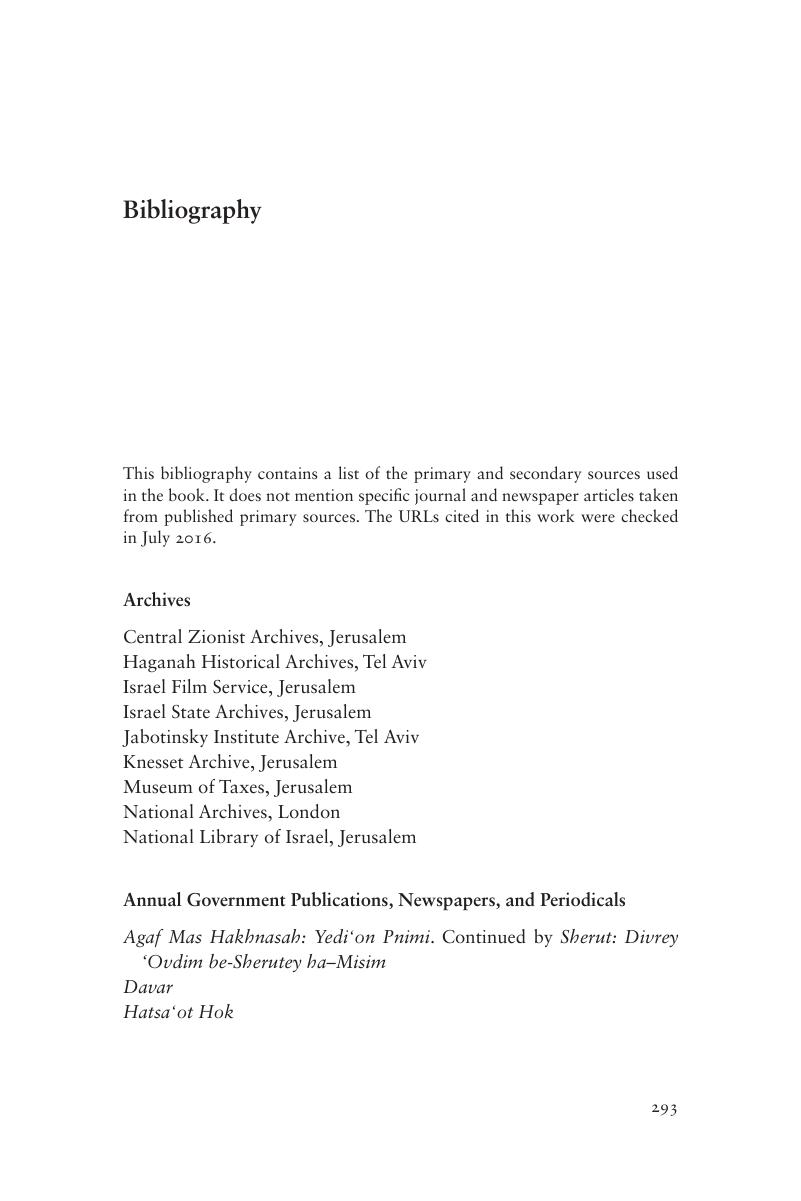Book contents
- Tax Law and Social Norms in Mandatory Palestine and Israel
- Studies in Legal History
- Tax Law and Social Norms in Mandatory Palestine and Israel
- Copyright page
- Dedication
- Contents
- Figures
- Tables
- Acknowledgments
- Note on Transliteration
- Abbreviations
- Introduction: The Intimate Fiscal State
- Part I The Rise of Income Taxation
- Part II The Ascendancy of Social Norms
- Part III The Transformation of Israeli Taxation and Its Law
- Epilogue
- Bibliography
- Index
- References
Bibliography
Published online by Cambridge University Press: 05 July 2017
- Tax Law and Social Norms in Mandatory Palestine and Israel
- Studies in Legal History
- Tax Law and Social Norms in Mandatory Palestine and Israel
- Copyright page
- Dedication
- Contents
- Figures
- Tables
- Acknowledgments
- Note on Transliteration
- Abbreviations
- Introduction: The Intimate Fiscal State
- Part I The Rise of Income Taxation
- Part II The Ascendancy of Social Norms
- Part III The Transformation of Israeli Taxation and Its Law
- Epilogue
- Bibliography
- Index
- References
Summary

- Type
- Chapter
- Information
- Tax Law and Social Norms in Mandatory Palestine and Israel , pp. 293 - 326Publisher: Cambridge University PressPrint publication year: 2017

